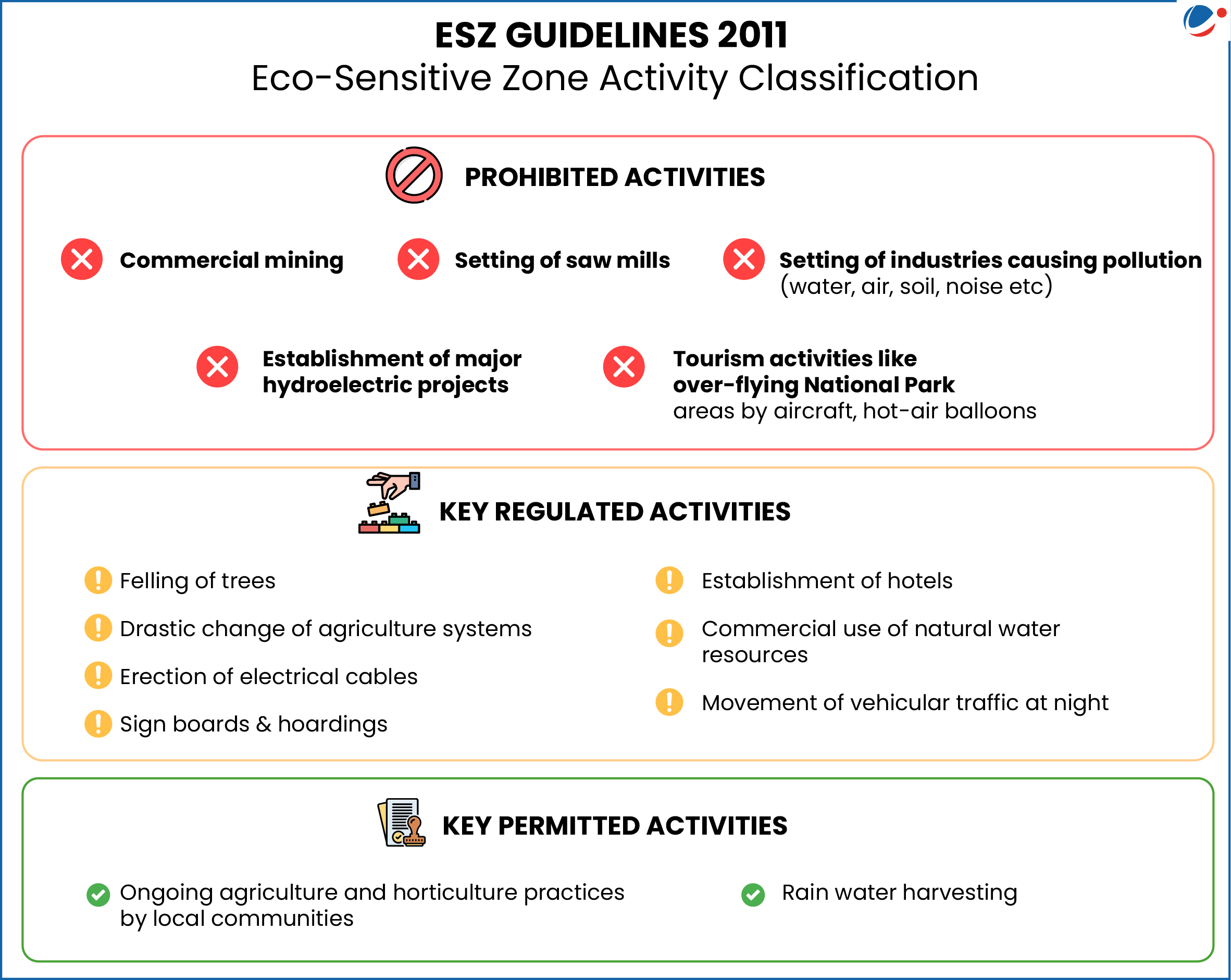Standing Committee of the National Board for Wildlife (SC-NBWL) has suggested revising the ‘Guidelines for declaration of ESZ, 2011 issued by the Ministry of Environment, Forest and Climate Change (MoEFCC)
- SC-NBWL stated that a uniform 10-km ESZ around all protected areas is not practical due to varying local conditions.
- For example, in Himachal Pradesh, about 65% of the land is already under forest or protected areas, and strict ESZ rules may hinder development without significant ecological benefits.
About ESZ

- Genesis: Concept introduced in the Wildlife Conservation Strategy, 2002.
- Definition: Areas with identified environmental resources having incomparable values which require special attention for their conservation” because they feature landscape, wildlife, biodiversity, historical, and scenic qualities (National Environment Policy, 2006).
- Purpose
- To create some kind of “Shock Absorber” for the specialized Ecosystem, such as Protected Areas (national parks or wildlife sanctuaries) or other natural sites
- To act as a transition zone from areas of high protection to areas involving lesser protection
- Demarcation: Lands falling within 10 km of the boundaries of PA should be notified as ESZ under Environment (Protection) Act, 1986.
- In 2023, the Supreme Court allowed States to change the minimum width of ESZs in the public interest.
- Court also prohibited mining within the national park and wildlife sanctuary, and within an area of one kilometre from their boundaries.
- In 2023, the Supreme Court allowed States to change the minimum width of ESZs in the public interest.
Planning and Regulation
- 2011 guidelines list the activities prohibited, regulated and permitted within ESZ (refer to the infographic).
- MoEF&CC, notifies ESZ on the recommendations of the State Government.
- State governments must prepare a Zonal Master Plan for each ESZ.
- Zonal Master Plan also mandates incorporating the Tourism Master Plan and Heritage sites listing
- No displacement of people is involved.





